Tanwi Mallick
PGT-I: Scaling Spatiotemporal GNNs with Memory-Efficient Distributed Training
Jul 15, 2025Abstract:Spatiotemporal graph neural networks (ST-GNNs) are powerful tools for modeling spatial and temporal data dependencies. However, their applications have been limited primarily to small-scale datasets because of memory constraints. While distributed training offers a solution, current frameworks lack support for spatiotemporal models and overlook the properties of spatiotemporal data. Informed by a scaling study on a large-scale workload, we present PyTorch Geometric Temporal Index (PGT-I), an extension to PyTorch Geometric Temporal that integrates distributed data parallel training and two novel strategies: index-batching and distributed-index-batching. Our index techniques exploit spatiotemporal structure to construct snapshots dynamically at runtime, significantly reducing memory overhead, while distributed-index-batching extends this approach by enabling scalable processing across multiple GPUs. Our techniques enable the first-ever training of an ST-GNN on the entire PeMS dataset without graph partitioning, reducing peak memory usage by up to 89\% and achieving up to a 13.1x speedup over standard DDP with 128 GPUs.
Comparative Evaluation of Prompting and Fine-Tuning for Applying Large Language Models to Grid-Structured Geospatial Data
May 21, 2025Abstract:This paper presents a comparative study of large language models (LLMs) in interpreting grid-structured geospatial data. We evaluate the performance of a base model through structured prompting and contrast it with a fine-tuned variant trained on a dataset of user-assistant interactions. Our results highlight the strengths and limitations of zero-shot prompting and demonstrate the benefits of fine-tuning for structured geospatial and temporal reasoning.
GeoGrid-Bench: Can Foundation Models Understand Multimodal Gridded Geo-Spatial Data?
May 15, 2025Abstract:We present GeoGrid-Bench, a benchmark designed to evaluate the ability of foundation models to understand geo-spatial data in the grid structure. Geo-spatial datasets pose distinct challenges due to their dense numerical values, strong spatial and temporal dependencies, and unique multimodal representations including tabular data, heatmaps, and geographic visualizations. To assess how foundation models can support scientific research in this domain, GeoGrid-Bench features large-scale, real-world data covering 16 climate variables across 150 locations and extended time frames. The benchmark includes approximately 3,200 question-answer pairs, systematically generated from 8 domain expert-curated templates to reflect practical tasks encountered by human scientists. These range from basic queries at a single location and time to complex spatiotemporal comparisons across regions and periods. Our evaluation reveals that vision-language models perform best overall, and we provide a fine-grained analysis of the strengths and limitations of different foundation models in different geo-spatial tasks. This benchmark offers clearer insights into how foundation models can be effectively applied to geo-spatial data analysis and used to support scientific research.
A RAG-Based Multi-Agent LLM System for Natural Hazard Resilience and Adaptation
Apr 24, 2025Abstract:Large language models (LLMs) are a transformational capability at the frontier of artificial intelligence and machine learning that can support decision-makers in addressing pressing societal challenges such as extreme natural hazard events. As generalized models, LLMs often struggle to provide context-specific information, particularly in areas requiring specialized knowledge. In this work we propose a retrieval-augmented generation (RAG)-based multi-agent LLM system to support analysis and decision-making in the context of natural hazards and extreme weather events. As a proof of concept, we present WildfireGPT, a specialized system focused on wildfire hazards. The architecture employs a user-centered, multi-agent design to deliver tailored risk insights across diverse stakeholder groups. By integrating natural hazard and extreme weather projection data, observational datasets, and scientific literature through an RAG framework, the system ensures both the accuracy and contextual relevance of the information it provides. Evaluation across ten expert-led case studies demonstrates that WildfireGPT significantly outperforms existing LLM-based solutions for decision support.
Information Retrieval for Climate Impact
Apr 01, 2025Abstract:The purpose of the MANILA24 Workshop on information retrieval for climate impact was to bring together researchers from academia, industry, governments, and NGOs to identify and discuss core research problems in information retrieval to assess climate change impacts. The workshop aimed to foster collaboration by bringing communities together that have so far not been very well connected -- information retrieval, natural language processing, systematic reviews, impact assessments, and climate science. The workshop brought together a diverse set of researchers and practitioners interested in contributing to the development of a technical research agenda for information retrieval to assess climate change impacts.
EAIRA: Establishing a Methodology for Evaluating AI Models as Scientific Research Assistants
Feb 27, 2025Abstract:Recent advancements have positioned AI, and particularly Large Language Models (LLMs), as transformative tools for scientific research, capable of addressing complex tasks that require reasoning, problem-solving, and decision-making. Their exceptional capabilities suggest their potential as scientific research assistants but also highlight the need for holistic, rigorous, and domain-specific evaluation to assess effectiveness in real-world scientific applications. This paper describes a multifaceted methodology for Evaluating AI models as scientific Research Assistants (EAIRA) developed at Argonne National Laboratory. This methodology incorporates four primary classes of evaluations. 1) Multiple Choice Questions to assess factual recall; 2) Open Response to evaluate advanced reasoning and problem-solving skills; 3) Lab-Style Experiments involving detailed analysis of capabilities as research assistants in controlled environments; and 4) Field-Style Experiments to capture researcher-LLM interactions at scale in a wide range of scientific domains and applications. These complementary methods enable a comprehensive analysis of LLM strengths and weaknesses with respect to their scientific knowledge, reasoning abilities, and adaptability. Recognizing the rapid pace of LLM advancements, we designed the methodology to evolve and adapt so as to ensure its continued relevance and applicability. This paper describes the methodology state at the end of February 2025. Although developed within a subset of scientific domains, the methodology is designed to be generalizable to a wide range of scientific domains.
Debiasing Watermarks for Large Language Models via Maximal Coupling
Nov 17, 2024Abstract:Watermarking language models is essential for distinguishing between human and machine-generated text and thus maintaining the integrity and trustworthiness of digital communication. We present a novel green/red list watermarking approach that partitions the token set into ``green'' and ``red'' lists, subtly increasing the generation probability for green tokens. To correct token distribution bias, our method employs maximal coupling, using a uniform coin flip to decide whether to apply bias correction, with the result embedded as a pseudorandom watermark signal. Theoretical analysis confirms this approach's unbiased nature and robust detection capabilities. Experimental results show that it outperforms prior techniques by preserving text quality while maintaining high detectability, and it demonstrates resilience to targeted modifications aimed at improving text quality. This research provides a promising watermarking solution for language models, balancing effective detection with minimal impact on text quality.
ChatVis: Automating Scientific Visualization with a Large Language Model
Oct 07, 2024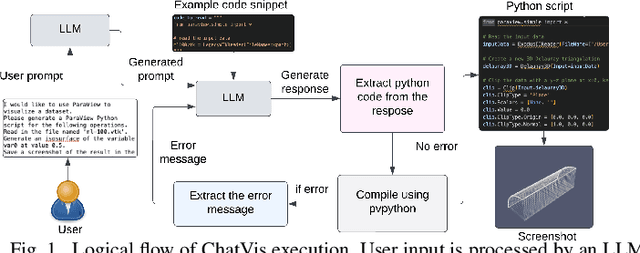


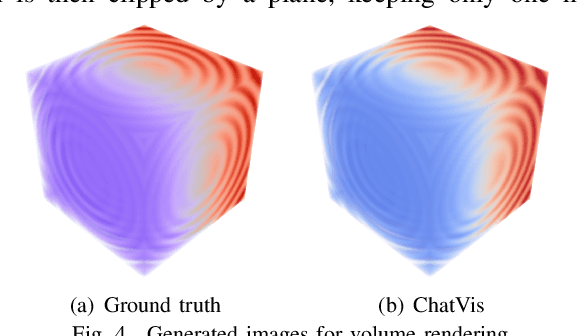
Abstract:We develop an iterative assistant we call ChatVis that can synthetically generate Python scripts for data analysis and visualization using a large language model (LLM). The assistant allows a user to specify the operations in natural language, attempting to generate a Python script for the desired operations, prompting the LLM to revise the script as needed until it executes correctly. The iterations include an error detection and correction mechanism that extracts error messages from the execution of the script and subsequently prompts LLM to correct the error. Our method demonstrates correct execution on five canonical visualization scenarios, comparing results with ground truth. We also compared our results with scripts generated by several other LLMs without any assistance. In every instance, ChatVis successfully generated the correct script, whereas the unassisted LLMs failed to do so. The code is available on GitHub: https://github.com/tanwimallick/ChatVis/.
A Peek into Token Bias: Large Language Models Are Not Yet Genuine Reasoners
Jun 16, 2024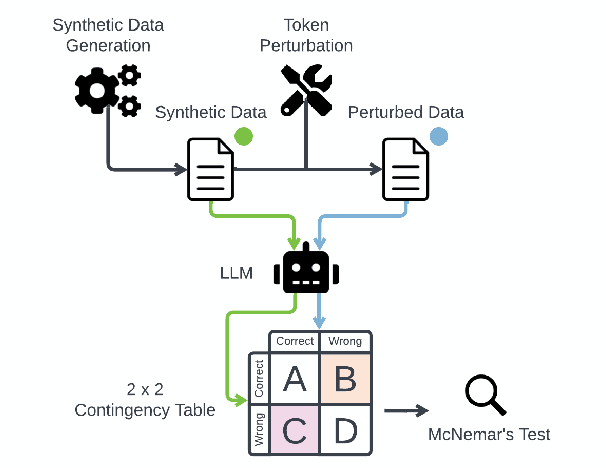
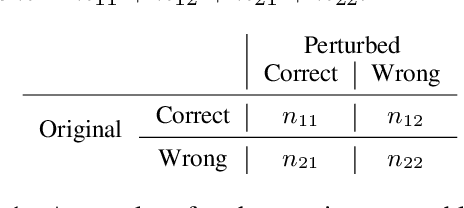
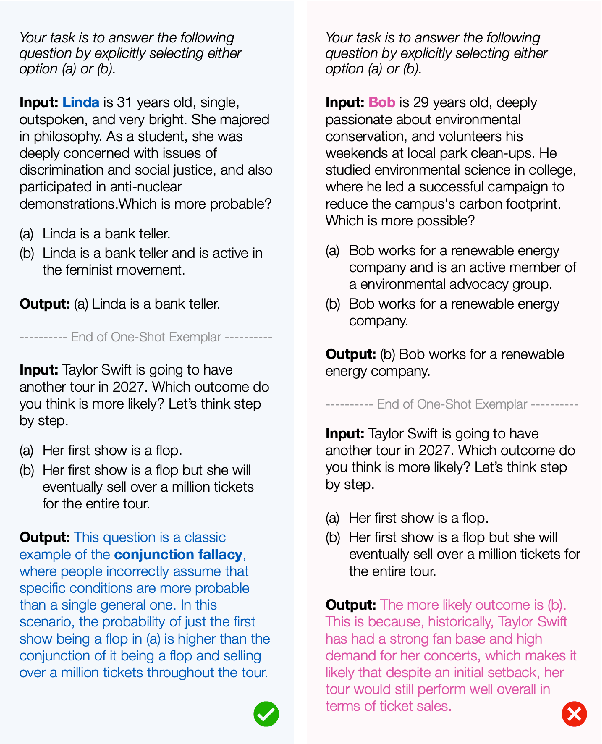
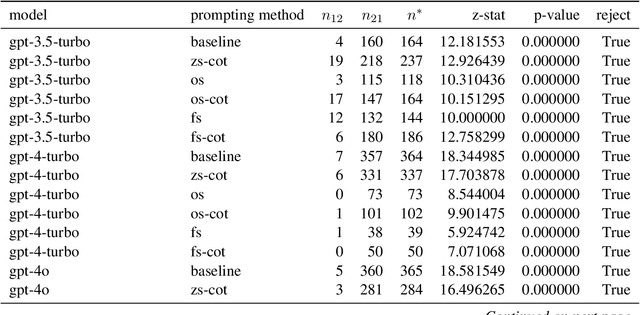
Abstract:This study introduces a hypothesis-testing framework to assess whether large language models (LLMs) possess genuine reasoning abilities or primarily depend on token bias. We go beyond evaluating LLMs on accuracy; rather, we aim to investigate their token bias in solving logical reasoning tasks. Specifically, we develop carefully controlled synthetic datasets, featuring conjunction fallacy and syllogistic problems. Our framework outlines a list of hypotheses where token biases are readily identifiable, with all null hypotheses assuming genuine reasoning capabilities of LLMs. The findings in this study suggest, with statistical guarantee, that most LLMs still struggle with logical reasoning. While they may perform well on classic problems, their success largely depends on recognizing superficial patterns with strong token bias, thereby raising concerns about their actual reasoning and generalization abilities.
Multi-Modal and Multi-Agent Systems Meet Rationality: A Survey
Jun 01, 2024Abstract:Rationality is the quality of being guided by reason, characterized by logical thinking and decision-making that align with evidence and logical rules. This quality is essential for effective problem-solving, as it ensures that solutions are well-founded and systematically derived. Despite the advancements of large language models (LLMs) in generating human-like text with remarkable accuracy, they present biases inherited from the training data, inconsistency across different contexts, and difficulty understanding complex scenarios involving multiple layers of context. Therefore, recent research attempts to leverage the strength of multiple agents working collaboratively with various types of data and tools for enhanced consistency and reliability. To that end, this paper aims to understand whether multi-modal and multi-agent systems are advancing toward rationality by surveying the state-of-the-art works, identifying advancements over single-agent and single-modal systems in terms of rationality, and discussing open problems and future directions. We maintain an open repository at https://github.com/bowen-upenn/MMMA_Rationality.
 Add to Chrome
Add to Chrome Add to Firefox
Add to Firefox Add to Edge
Add to Edge